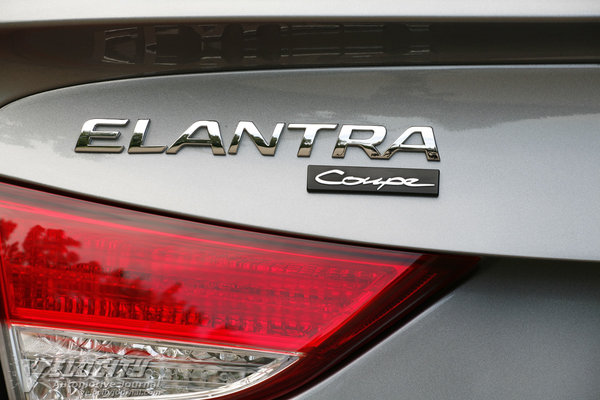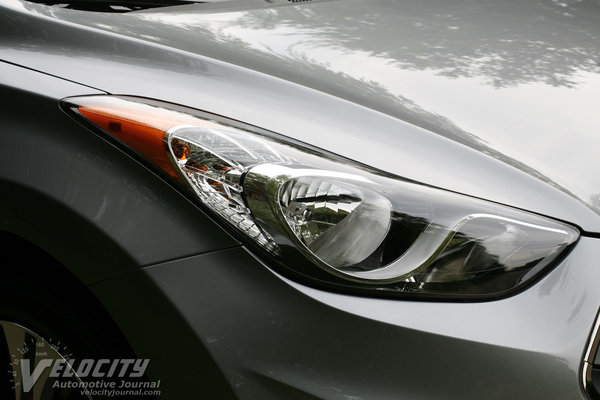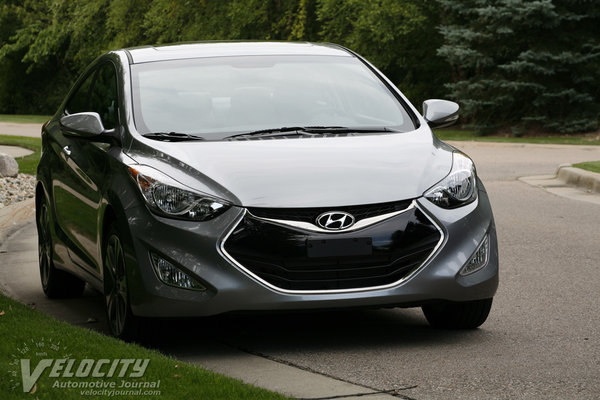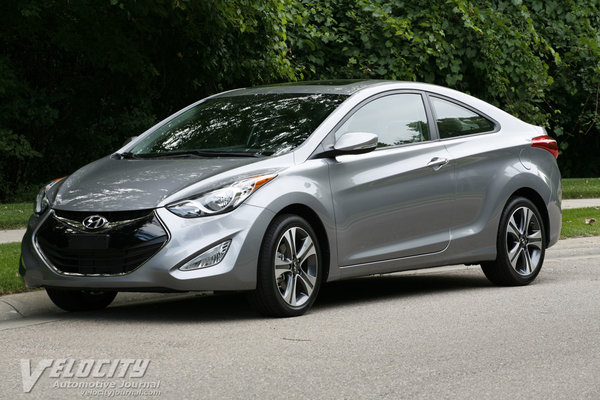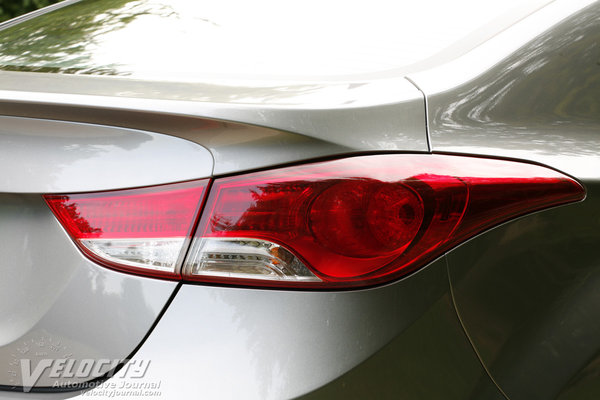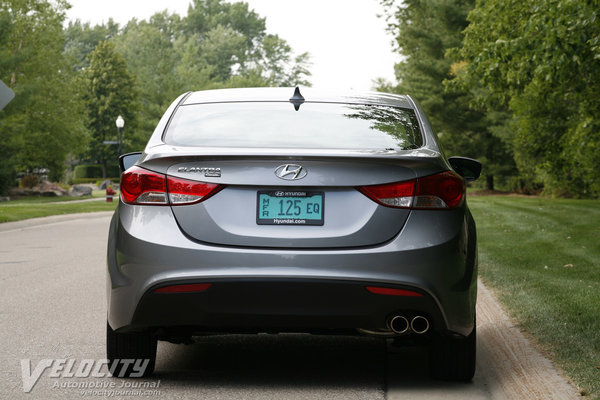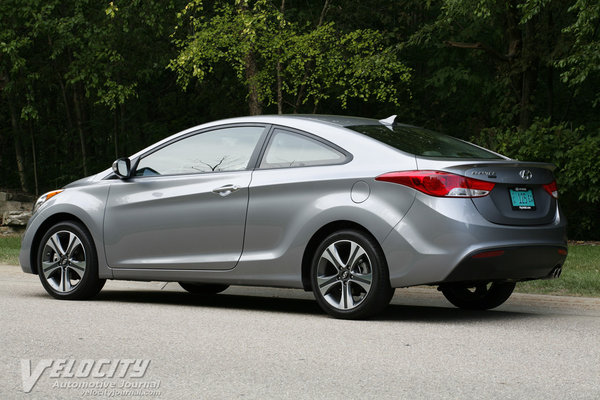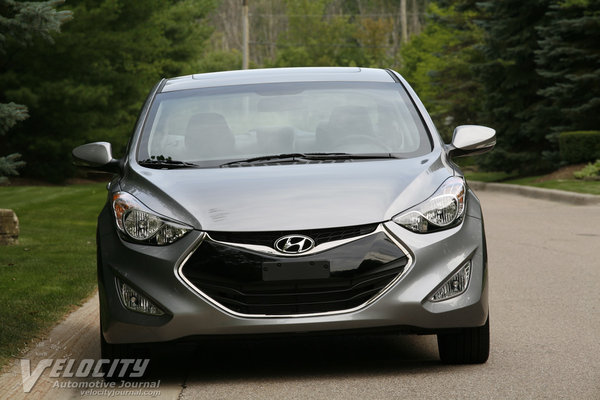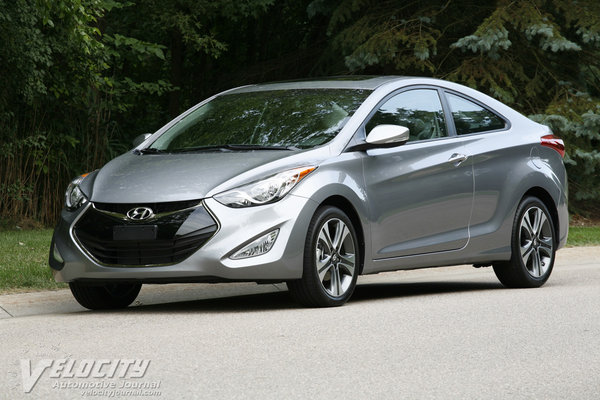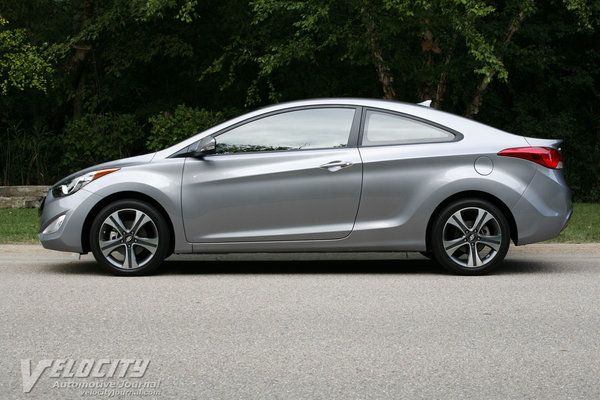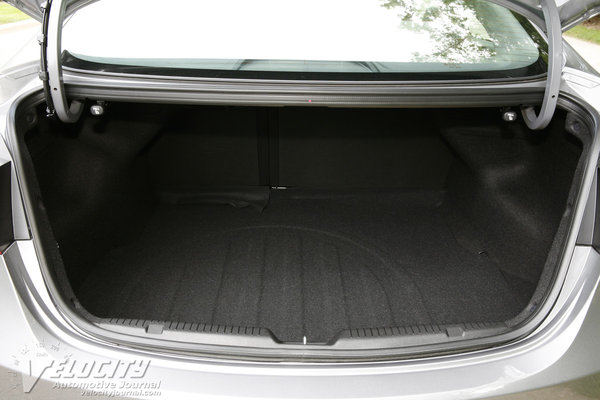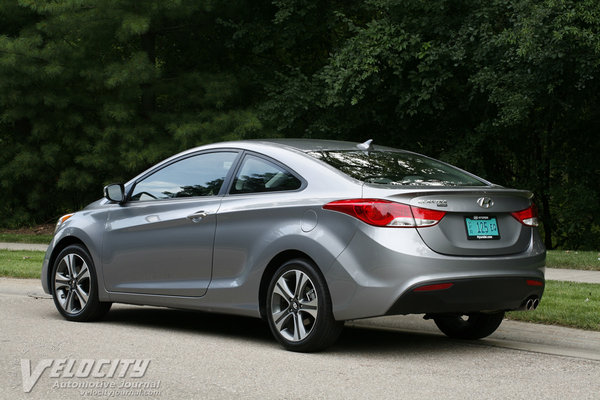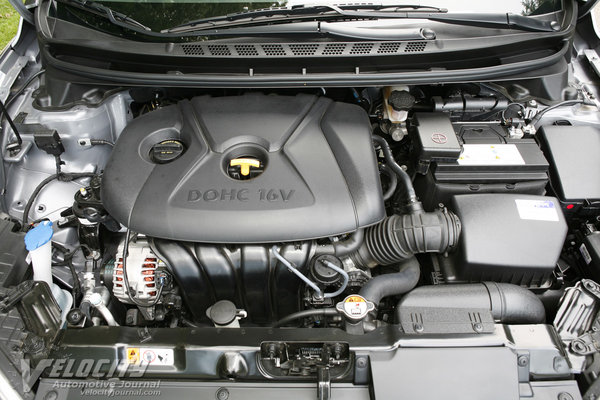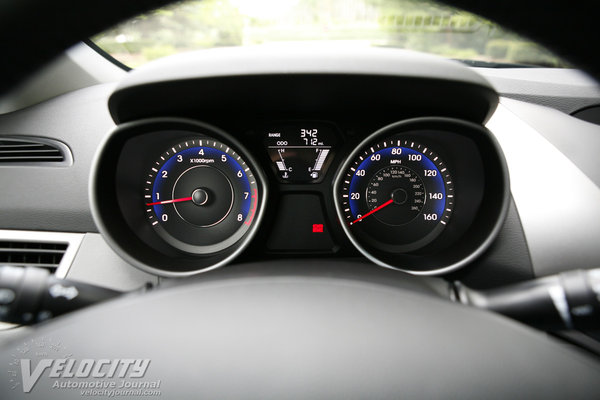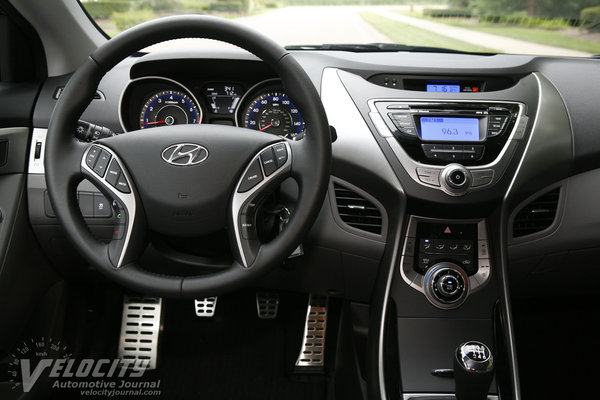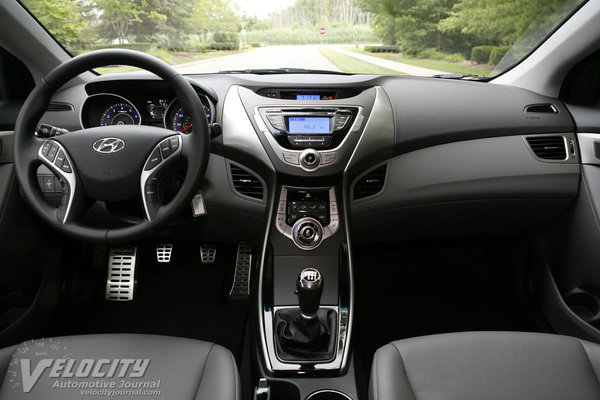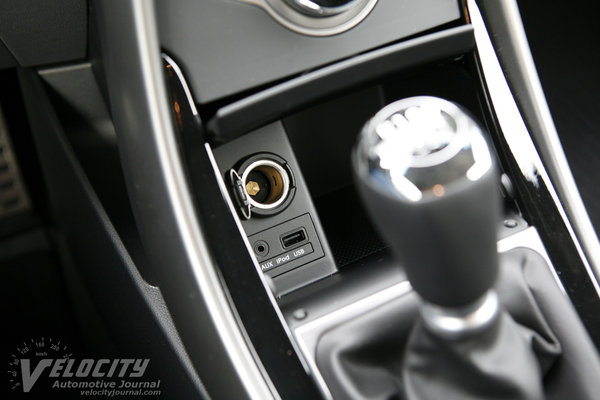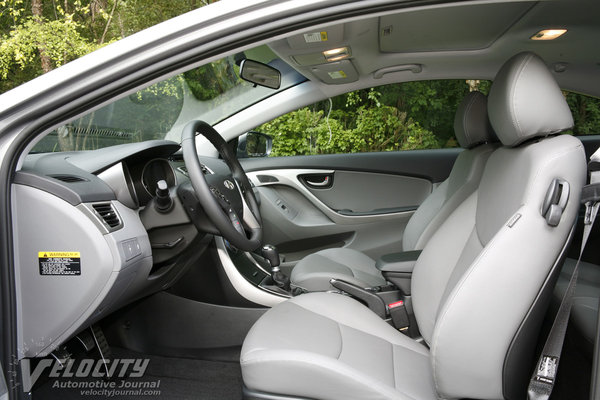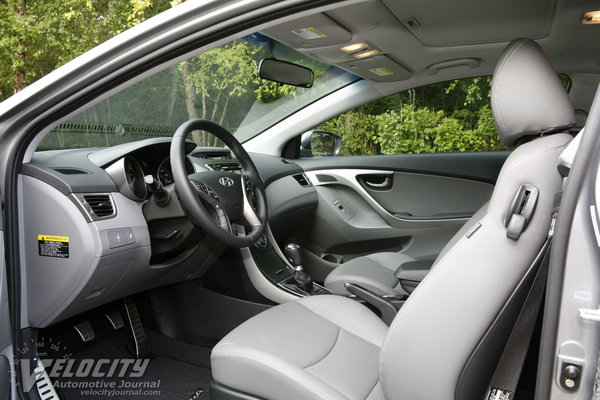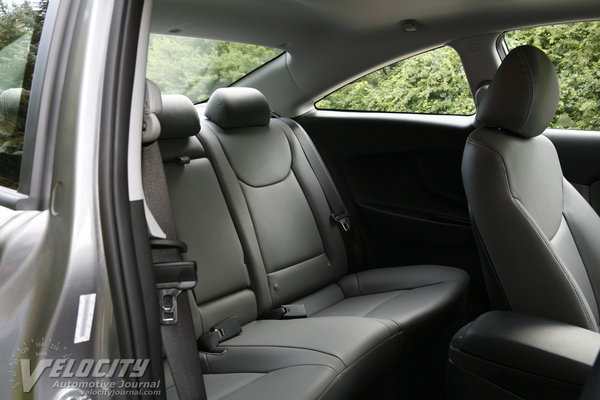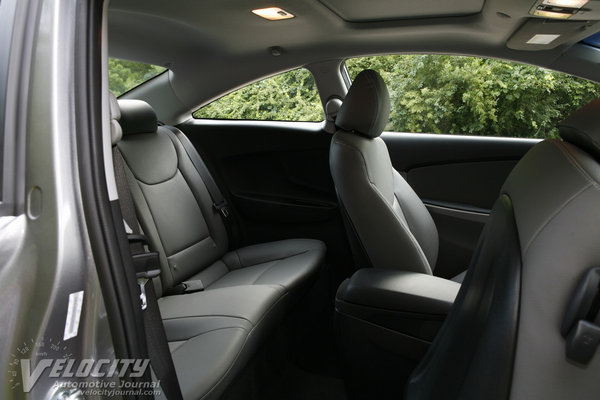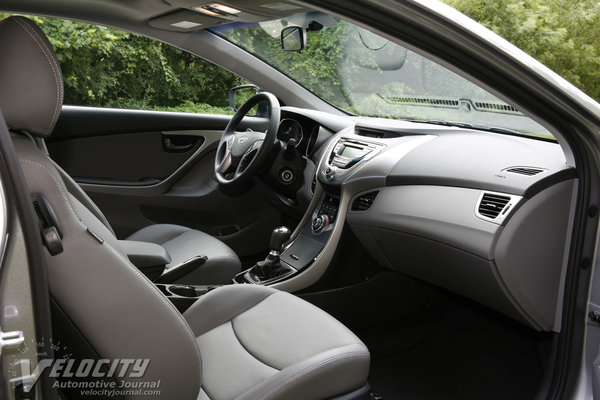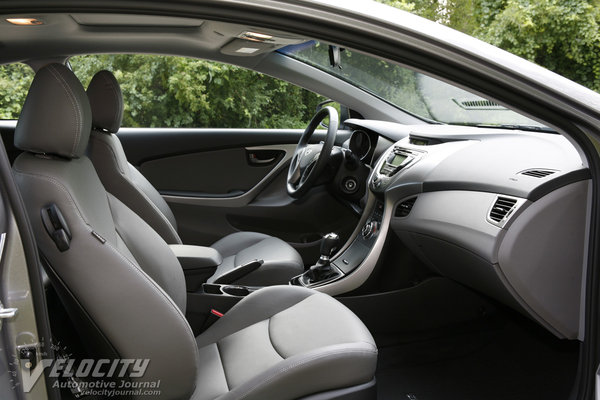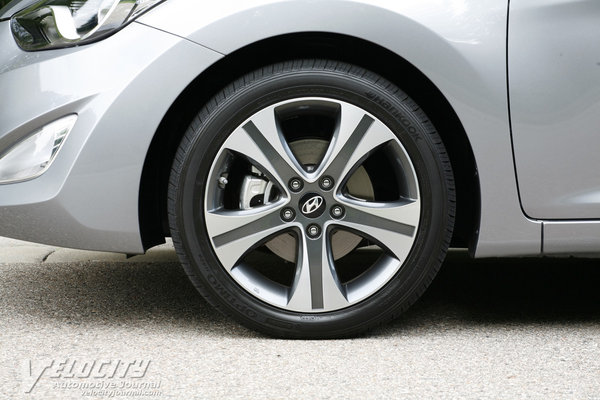2013 Hyundai Elantra Coupe
02/12/2013
Shahed Hussain
Hyundai has carved out a significant chunk of the compact sedan market with the Elantra, but the Coupe is a new addition to the lineup. Only the Japanese and Korean manufacturers offer affordable small coupes in their lineup. Kia was the first to take on the Honda Civic and Scion tC with the Forte Koup, a move that did not go unnoticed by corporate sibling Hyundai.
Building a 2-door variant is a natural extension to the Elantra lineup, which also includes the 5-door GT. Two trim levels are available, the Elantra Coupe GS ($17,595), or the better equipped SE ($19,895). Both models are powered by a 1.8L inline-4 coupled to a 6-speed manual or optional automatic ($1,000). We tested a 2013 Elantra Coupe SE equipped with the manual gearbox and optional floor mats. In typical Hyundai tradition, a comprehensive standard equipment list includes a power sunroof, leather seats (heated in front), 17-inch alloy wheels, Bluetooth, foglights, and rear spoiler. The total sticker price was $20,615 including the $775 freight and handling charge.
Inside the Elantra, Hyundai designers used curves and complex surfaces to create an interior theme echoing the exterior styling. A padded dashboard and upper door panels are becoming rare in the compact segment, but the Elantra has both. The Elantra SE also gets stainless steel pedals and a polished stainless shift knob for the 6-speed manual. Within the instrument binnacle are an 8,000 RPM tachometer and a 160-MPH speedometer. A multi-function digital display contains a bar graph-type coolant temperature and fuel level gauges. An ECO mode indicator lights up on the trip computer display to encourage early upshifts. The 4-spoke leather-wrapped steering wheel has controls for audio, cruise, and Bluetooth phone. Thankfully, Hyundai used large buttons and knobs for the audio system and air conditioning controls. Within the center stack storage compartment are a USB and auxiliary audio input for media players and mobile phones, along with a 12V power outlet.
Opting for the Elantra SE replaces cloth with supportive leather heated seats. Both front seats have manual controls for reach/rake, but the driver's seat also gets height adjustment. The standard power sunroof steals headroom, but drivers less than 6-ft. tall should fit comfortably. Coupes usually sacrifice rear seat accommodations for a sleek roofline, but the Elantra's back seats offer above average comfort and legroom, although the sunroof cuts available headroom for occupants taller than about 5'-10".
Current and future EPA fuel economy targets continue to push automakers to shrink engine displacement to improve miles per gallon. In this context, it's unsurprising that Hyundai replaced the previous 2.0L inline-4 with a new 1.8L inline-4. The all-aluminum powerplant has double overhead camshafts and dual continuous variable valve timing. Hyundai rates the 1.8L at 148-bhp @ 6,500 RPM and 131 lb.-ft @ 4,700 RPM. Elantra's sold in PZEV states give up three horsepower and one foot-pound of torque. Getting adequate low and midrange torque from a normally aspirated small inline-4 is difficult without forced induction, so extracting maximum performance requires pushing into the upper reaches of the tachometer. To its credit, the 1.8L is exceptionally refined below 4,000 RPM, and revs willingly to the 6,750 RPM redline, just beyond the horsepower peak.
The standard 6-speed manual is unusual in that fourth, fifth and sixth gears are overdrive ratios. In contrast, only sixth gear is overdrive in the optional 6-speed automatic. The manual gearbox is coupled to a short 4.333:1 final drive ratio, but the automatic is mated to a considerably taller 3.065:1 ratio. According to the EPA, the Elantra's fuel consumption is nearly identical with either transmission: 28/38 MPG (city/hwy.) for the manual or one less MPG in each cycle with the automatic. Note that these are updated estimates after Hyundai revised its ratings. Originally, the Elantra with the manual gearbox was rated at 29/40 MPG (city/hwy.) In our mixed urban and highway driving, we averaged 31 MPG, approaching the 32 MPG EPA combined rating.
Hyundai chose a typical front suspension consisting of MacPherson struts, coil springs and a stabilizer bar. At the rear is a torsion beam axle with coil springs and gas-filled dampers. The Elantra SE gets a sport-tuned suspension, although the suspension hardware appears identical to the GS. Seventeen-inch alloy wheels shod with P215/45R17 Hankook Optimo tires are an upgrade from the 16-inch alloys and P205/55R16 tires that equip the Elantra GS. Braking is via an all-disc system with vented rotors in front and solid rotors at the rear. ABS, electronic stability control (ESC), and traction control (TCS) are standard. Hyundai did an effective job of keeping curb weight in check: the manual transmission Elantra weighs between 2,687 lbs. and 2,835 lbs. The automatic is slightly heavier, coming in at 2,729-2,877 lbs.
Even though fewer American customers are selecting manual transmissions, Hyundai should be commended for continuing to offer them in the US. Light, progressive clutch engagement, combined with a shifter that slips into each gear reminded us how good a properly engineered manual gearbox can be. First and second gear allow the Elantra to get off the line quickly, but the tall fourth through sixth ratios drop the 1.8L engine out of its torque peak. Passing other cars on the highway often requires a downshift into fifth or even fourth gear. We also briefly drove an Elantra equipped with the 6-speed automatic, a smooth-shifting gearbox that we suspect most customers will prefer.
Hyundai engineers tuned Elantra's suspension with a clear focus on a comfortable ride above all. Bumps and cratered roads are absorbed by the soft springs and dampers. Around curves, the suspension exhibits moderate body roll and significant rear squat under acceleration in first and second gears. The beam axle judders over sharp bumps, causing the rear end to slip sideways occasionally, especially under braking, as weight transfers to the front. To be fair, this is typical for twist-beam axles, but we expected tighter damping from a sport-tuned suspension. Although motor-assisted systems often have a reputation for artificial feel, the Elantra's steering wheel accurately telegraphs road surface textures. Steering effort is lighter than we would prefer, but not objectionably so. Cruising on the highways around Detroit revealed minimal wind noise, but concrete surfaces resulted in more tire hiss than expected. On asphalt roads, the Hankooks were much less audible. We did note that the Elantra required frequent minor course corrections at 70-80 MPH, although we aren't sure if the tires or the steering are responsible. The all-disc brakes shed speed rapidly, but the spongy pedal and pronounced suspension dive did little to convince us of the Elantra's sporting credentials.
Hyundai has pitched the Elantra Coupe as a less expensive, yet comprehensively-equipped alternative to the Honda Civic Coupe. From a value perspective, the Hyundai has a clear edge over the Honda, although the Elantra favors ride comfort over the Civic's tightly snubbed suspension tuning. From Hyundai's perspective, the 2-door Elantra should poach a few customers from Honda showrooms, further expanding its market share in the extremely competitive compact segment. That said, we do think that the Elantra SE could definitely benefit from additional suspension development. Until then, Hyundai enthusiasts should probably consider the Genesis Coupe instead.

